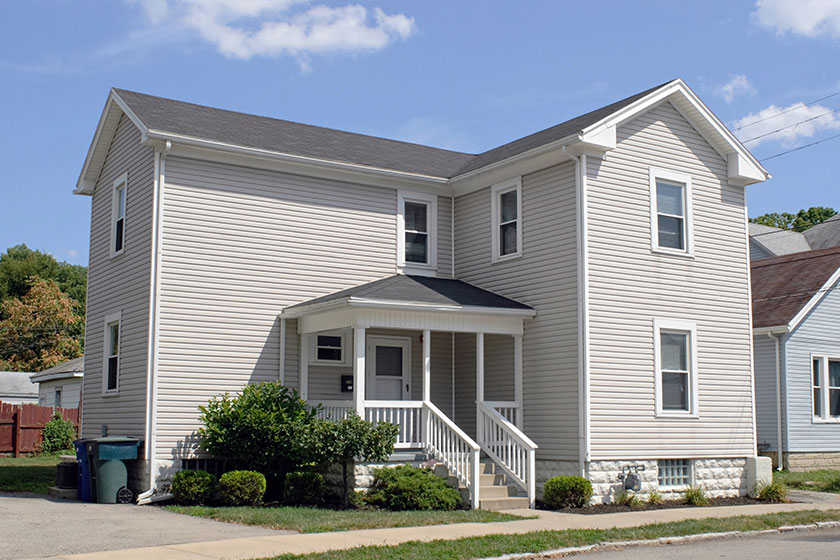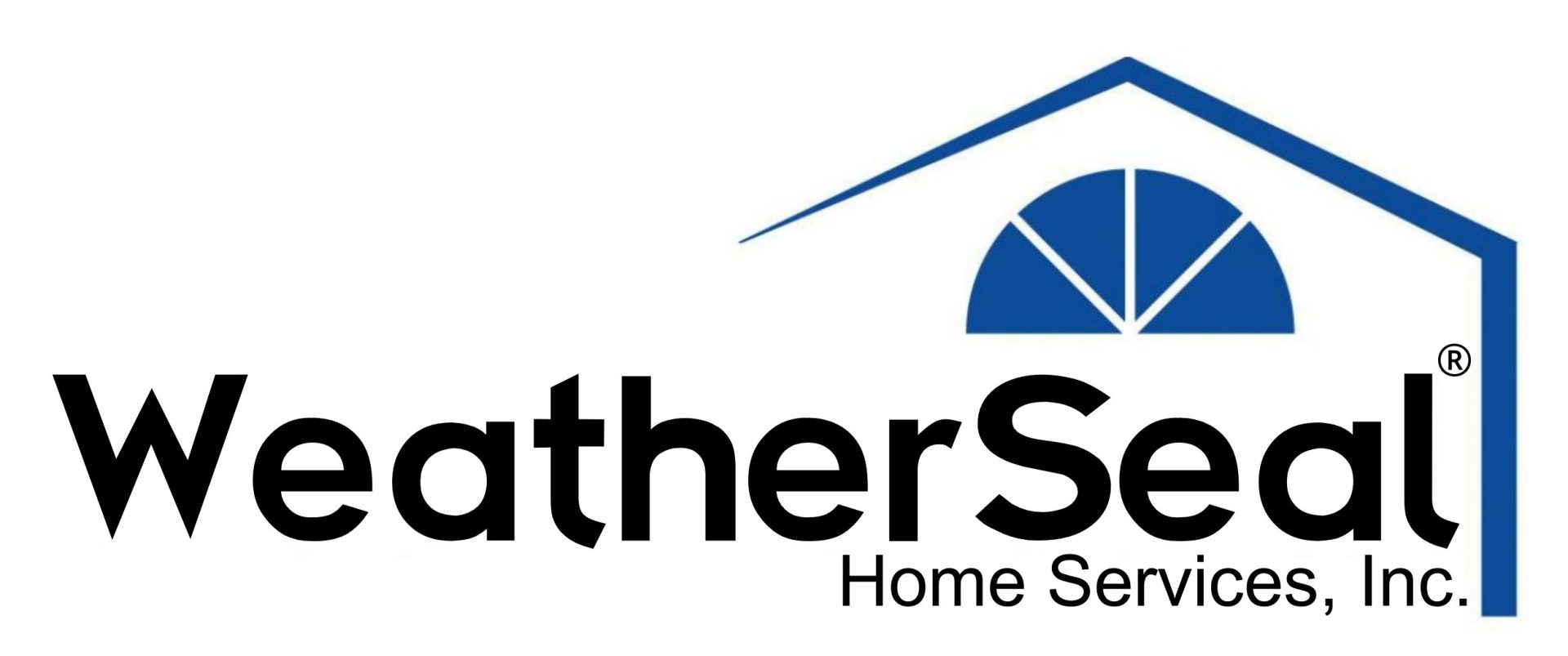Investing in new siding for your home is a significant decision. It directly impacts both the aesthetics and functionality of your property. Siding acts as a protective barrier against weather elements, enhances energy efficiency, and contributes to your home’s curb appeal.
For homeowners in Pennsylvania, the answer to “How much is siding?” involves a combination of factors, including material choice, labor rates, the size of your home, and local regulations. This guide provides a detailed overview of these factors to help you make an informed decision.

Factors Influencing Siding Costs in Pennsylvania
The cost of new siding in Pennsylvania can fluctuate considerably based on several factors. These are influenced by regional differences, material availability, local market trends, and specific homeowner needs. Pennsylvania’s diverse climate and regional variations play a significant role in determining how much new siding will cost.
Below, we explore these factors in greater detail:
- Material Selection
One of the most influential factors in determining siding costs is the choice of material. Each type of siding offers its own set of benefits, aesthetic appeal, and durability, which in turn affects the overall price. The most common siding materials include vinyl, wood, fiber cement, aluminum, and stone veneer.
Vinyl is one of the most affordable siding options available. Its cost-effectiveness and low maintenance requirements make it the most popular choice among homeowners in Pennsylvania. On the other hand, materials like fiber cement and stone veneer can be significantly more expensive but offer enhanced durability and a premium appearance.
- Size of the Home
The size of your home is another critical factor in determining the cost of new siding. Larger homes require more materials and, therefore, more labor to complete the installation. Typically, the larger the square footage of your home, the more expensive the siding project will be.
To calculate the square footage of your home’s exterior, you’ll need to consider the total surface area of all walls that require siding. This includes not only the main walls but also any extensions, garages, or additional structures like porches.
For example, a typical 2,000-square-foot home may need approximately 2,200 to 2,500 square feet of siding material, accounting for corners, window cutouts, and other architectural features. As the size of your home increases, so do the material and labor costs.
A 3,000-square-foot home would require more materials than a smaller 1,500-square-foot home. Therefore, this raises the total cost. It’s necessary to get an accurate measurement of your home’s exterior to get a precise cost estimate.
- Installation Costs
The labor cost for siding installation varies significantly depending on where you live in Pennsylvania. Urban areas with higher demand for construction services may have higher labor rates. Meanwhile, rural areas with fewer contractors may deliver more competitive prices.
Experienced contractors typically charge anywhere from $1 to $4 per square foot for installation. This cost may increase if the job involves more complex aspects, such as multiple stories, intricate details, or the need for specialized equipment.
Homeowners should not solely focus on finding the lowest labor rates. Opting for a less experienced or unqualified contractor might lead to issues like poor installation quality, potential damage to the siding, or subpar results. Choosing a contractor with extensive experience and positive reviews is important for guaranteeing the durability and longevity of your siding.
Additionally, the complexity of your home’s design also plays a role in labor costs. Homes with intricate rooflines, unusual shapes, or numerous windows may require additional time and effort to install siding, thereby increasing the overall cost.
- Removal of Old Siding
If your home currently has old siding that needs to be removed before the new installation, this adds to the cost. Removing old siding involves not only the physical labor of tearing down the material but also the disposal of the old siding.
For example, if your current siding is asbestos-based (a common material in older homes), the removal and disposal process becomes significantly more expensive due to safety regulations. Asbestos siding requires specialized removal procedures to prevent contamination.
Depending on the material and the amount of siding to be removed, the cost of removal and disposal can range from $1,000 to $3,000 or more. Homes without hazardous materials may not have such high disposal costs. However, the labor to remove the old siding will still need to be factored into the overall budget.
- Additional Features
If your home has intricate architectural features, multiple levels, or additional structures, the complexity of the siding installation will increase. More complex designs often require additional labor and materials. For example, homes with multiple stories or steep rooflines may require scaffolding, ladders, or special tools to complete the installation, which can increase the time and cost required for the project.
Additionally, features such as large windows, numerous corners, or decorative elements can increase the surface area that needs to be covered. This further requires more material. Homes with these features are often more expensive to side due to the additional labor involved in cutting and fitting the siding around complex areas.
- Insulation and Upgrades
Many homeowners in Pennsylvania opt to add insulation underneath their siding to improve energy efficiency. Insulated siding or the addition of foam sheathing beneath the siding can reduce heat loss. This makes homes more energy-efficient and potentially lowering utility bills over time. While this adds to the initial cost—often an additional $1 to $3 per square foot—the long-term savings in heating and cooling costs can make it a worthwhile investment.
Upgrades to the siding, such as custom trims, decorative accents, or weather-resistant barriers, can also add to the total cost. These features can help enhance the home’s appearance, boost energy efficiency, or bring additional protection against the elements.
- Regional Weather Conditions
Pennsylvania experiences a wide range of weather conditions, from hot and humid summers to cold and snowy winters. As a result, the siding material you choose must be able to withstand the state’s harsh climate.
In areas where heavy snow, hail, or ice storms are common, it’s important to choose durable siding materials that can resist damage from these elements. For instance, fiber cement, engineered wood, and stone veneer are particularly suited for extreme weather due to their durability and resistance to impact damage.
Conversely, vinyl siding, while budget-friendly, may not be as resilient in areas that experience heavy snowfall or hail. Homeowners in such regions may consider investing in more robust materials that can better withstand the conditions.
How Much is Siding: Average Cost in Pennsylvania
The average cost of installing new siding in Pennsylvania can vary based on a variety of factors above. Homeowners should be prepared for a wide range of pricing depending on their preferences for appearance, durability, and long-term maintenance needs.
The following breakdown provides a closer look at the costs associated with various popular siding materials in Pennsylvania:
- Vinyl Siding
Vinyl siding remains one of the most popular choices among homeowners due to its affordability, ease of maintenance, and wide range of design options. It is an excellent option for homeowners looking for a cost-effective solution with minimal upkeep.
The cost of vinyl siding typically falls between $4 and $8 per square foot. This range accounts for both the material cost and the labor required for installation.
For an average-sized home of about 2,000 square feet, the total cost for vinyl siding can range from $8,000 to $16,000. Vinyl siding is available in a variety of colors, textures, and styles. It allows homeowners to customize the look of their home without breaking the bank.
Though vinyl is durable, it may not be as resistant to extreme weather conditions compared to some of the other options. Over time, it can show signs of wear, such as fading or cracking, particularly in regions with intense sunlight or freezing temperatures.
- Wood Siding
Wood siding provides a natural and rustic look that adds charm and curb appeal to homes. Common types of wood used for siding include cedar, redwood, and pine. The cost of wood siding typically ranges from $6 to $12 per square foot. The material itself tends to be on the pricier side, and maintenance costs can add up over time.
For a home with an exterior size of 2,000 square feet, homeowners can expect to pay between $12,000 and $24,000 for wood siding, including installation. While wood offers aesthetic appeal and long-term durability, it requires regular maintenance, such as sealing or staining, to prevent rot, mold, or insect damage.
Additionally, wood siding can be more susceptible to the elements. It requires ongoing attention to keep it looking its best in Pennsylvania’s diverse climate.
- Fiber Cement Siding
Fiber cement siding, such as HardiePlank, has gained popularity due to its versatility, strength, and aesthetic appeal. It is designed to mimic the look of traditional wood siding while offering enhanced durability and resistance to elements like fire, insects, and moisture.
Fiber cement is priced between $8 and $14 per square foot, and for an average 2,000-square-foot home, homeowners can expect to spend between $16,000 and $28,000.
While fiber cement comes with a premium look and performance, the initial cost can be higher than vinyl or aluminum options. However, homeowners who prioritize low maintenance and long-term durability often find that fiber cement is worth the investment.
The material’s resistance to moisture and pests makes it especially appealing for homes in areas of Pennsylvania that experience high humidity or heavy rainfall. Additionally, fiber cement is available in a variety of styles, including horizontal and vertical panels, which allows for flexibility in design.
- Aluminum Siding
Aluminum siding is a lightweight and affordable option, ideal for homeowners who are looking for a balance between durability and cost. This material is often chosen for its low maintenance requirements and its resistance to rust. Aluminum siding costs between $5 and $9 per square foot, which is typically less expensive than fiber cement or wood.
Homeowners can expect total costs ranging from $10,000 to $18,000 for a 2,000-square-foot home. While aluminum is durable and brings some level of weather resistance, it may not be as resilient as other materials in the long run.
For example, aluminum siding can dent more easily, and in areas that experience frequent hailstorms, it may not hold up as well as more solid materials like fiber cement or stone veneer. Nonetheless, aluminum remains a viable option for homeowners looking for a low-maintenance solution at an affordable price.
- Stone Veneer Siding
Stone veneer is a luxurious option for homeowners who seek the beauty and durability of stone without the high cost and weight of natural stone. Made from concrete, stone veneer can offer the same aesthetic appeal as traditional stone siding at a significantly lower price. The cost of stone veneer siding typically ranges from $15 to $30 per square foot. This is one of the more expensive materials available.
For a 2,000-square-foot home, the total cost for stone veneer siding can range from $30,000 to $60,000. It’s an investment in both curb appeal and long-term durability. Stone veneer is highly resistant to the elements, including moisture and temperature fluctuations, which makes it an ideal choice for homes in regions with extreme weather conditions.
Additionally, stone veneer requires very little maintenance and can deliver lasting value to a home. However, the higher upfront cost may be prohibitive for some homeowners, especially when compared to more affordable materials like vinyl or aluminum.
- Engineered Wood Siding
Engineered wood siding is a composite material that combines wood fibers with resin to create a durable and cost-effective alternative to traditional wood siding. This type of siding provides the appearance of wood while offering improved durability, reduced maintenance requirements, and enhanced resistance to moisture and pests. Engineered wood siding typically costs between $7 and $12 per square foot.
Homeowners can expect to spend between $14,000 and $24,000 for engineered wood siding for a 2,000-square-foot home. Engineered wood has become a popular choice among homeowners due to its lower maintenance needs compared to natural wood, as well as its ability to replicate the look of wood without the same vulnerability to rot, mold, or insect infestations.
Moreover, engineered wood is often more affordable than both natural wood and fiber cement. This will provide a great balance of quality and cost.
Additional Costs to Consider
When planning a new siding installation project in Pennsylvania, homeowners should be aware that the upfront costs for siding material and installation are only part of the total expense. Several additional factors can contribute to the overall cost of the project.
Here are some of the common additional costs that homeowners may encounter:
- Permit Fees
In many local municipalities in Pennsylvania, homeowners may be required to obtain a permit before installing new siding. Permits are generally needed to make sure that the installation complies with local building codes and regulations, particularly for structural changes or certain types of siding materials.
While permit fees can vary depending on the municipality, homeowners can expect to pay anywhere from $50 to $200 for the permit. The cost typically depends on the location of the home, the scope of the work, and the specific regulations in that area.
It’s important to check with your local city or county government to determine if a permit is necessary and to understand the requirements for your specific project.
- Repairs and Preparation
Before new siding can be installed, the exterior of the home may need to be prepared, especially if there are pre-existing issues with the structure. The condition of the home’s exterior plays a significant role in the overall cost of the project.
In some cases, homeowners may need to invest in repairs, such as fixing or replacing rotten wood, repairing cracks, or addressing moisture damage.
These types of repairs are essential to making sure that the new siding is installed correctly and will last for many years. Depending on the extent of the damage, the costs for repairs can range from a few hundred dollars to several thousand dollars.
Additionally, some homes may require additional preparation, such as the installation of a weather-resistant barrier, which can further increase the overall cost.
- Painting or Staining
Certain siding materials, such as wood and fiber cement, may require painting or staining after installation to achieve the desired aesthetic finish and protect the material from the elements.
Wood siding, for example, requires regular staining or painting to prevent moisture from penetrating the surface, which can lead to rot and other issues. Fiber cement, while resistant to many elements, often requires painting to maintain its appearance and guarantee longevity.
The cost of painting or staining can range from a few hundred dollars to several thousand dollars depending on the size of the home and the number of coats required. The more intricate the home’s design, the more labor-intensive and costly the painting process may be. Additionally, some homeowners may choose to hire professional painters to guarantee a high-quality finish, which can increase labor costs.
- Cleaning and Maintenance
Though cleaning and maintenance are typically ongoing costs, they should be considered when calculating the total lifetime cost of siding. Some siding materials, such as vinyl and aluminum, require minimal maintenance. Regular cleaning with soap and water or a pressure wash every year or two is usually enough to keep these materials looking fresh.
However, more durable materials like wood and fiber cement require more attention over time to maintain their appearance. Wood siding, in particular, requires periodic staining or sealing to protect it from moisture and prevent rot. Meanwhile, fiber cement may need occasional repainting.
These ongoing maintenance costs can add up over the years, and it’s essential for homeowners to factor them into their long-term budget. The cost of maintenance can range from a few hundred dollars annually for light cleaning to several thousand dollars for re-staining or repainting every 5 to 10 years.
- Disposal Fees
When replacing old siding, homeowners should also anticipate disposal fees for the removal of the old material. This is especially important if the existing siding is made of materials that cannot be recycled or if hazardous materials like asbestos are involved.
Professional contractors will often charge an additional fee for disposing of old siding. This can vary based on the amount of material and the disposal requirements.
For example, if the old siding is not biodegradable or requires special handling, disposal fees may be higher. On average, homeowners can expect to pay between $100 and $500 for disposal, depending on the size of the project and the type of siding being removed.
In some cases, homeowners may be able to save money by taking on this task themselves. However, it is important to understand the proper disposal methods, particularly if hazardous materials are involved.
- Additional Features and Upgrades
In addition to the primary siding materials, some homeowners choose to invest in additional features or upgrades that enhance the aesthetic or functional aspects of their siding. For example, adding decorative trim or custom moldings can increase the overall appeal of the home, but these additions come at an extra cost.
Similarly, if you decide to install extra insulation beneath the siding to improve energy efficiency, this will increase the price of the project. Insulation is particularly beneficial in regions like Pennsylvania, where the climate can vary significantly between seasons, and homes may benefit from enhanced thermal resistance. The cost of insulation can range from $1 to $3 per square foot depending on the type and thickness of the material.
Some homeowners may also opt for additional weatherproofing measures, such as installing house wrap or vapor barriers, to protect the home from moisture and improve energy efficiency.
These upgrades are typically priced based on the square footage of the home and can add anywhere from $500 to $2,000 to the total cost of the project. This depends on the level of insulation and weatherproofing required.
- Hidden Costs to Look Out For
In addition to the visible costs of materials, labor, and permits, there are several hidden costs that may arise during a siding project. These hidden costs may include unexpected repairs, such as fixing hidden water damage or replacing structural supports that were not visible before the siding was removed.
Homeowners may also face additional charges for the removal of layers of old siding, such as when multiple layers of siding need to be stripped away. These hidden expenses can quickly add up. It’s necessary to leave room in your budget for potential unforeseen costs.
Choosing the Right Contractor
Choosing the right contractor for your commercial siding project is a critical decision. At WeatherSeal Home Services, we understand that the appearance and durability of your building are essential to its success. With over 25 years of experience serving Pennsylvania and Ohio, we’ve built a solid reputation for delivering high-quality siding solutions that enhance the aesthetics and longevity of your property.
Why choose us? Our team is dedicated to offering exceptional craftsmanship and attention to detail. We work with a variety of materials, including vinyl, longboard, and cassette panel siding. We make sure that you have options that suit your specific needs and budget. Our professional contractors are licensed, insured, and committed to adhering to industry standards, guaranteeing that every installation is performed to the highest quality.
We also believe in transparency. From the initial consultation to the final installation, we provide clear, detailed estimates that include all costs—labor, materials, permits, and disposal fees—so you can trust that there are no hidden charges. Additionally, we stand behind our work with warranties on both materials and labor. We give you peace of mind that your investment is protected.
Let us help you create a siding solution that reflects your brand and enhances your business’s curb appeal. Contact WeatherSeal Home Services for a free consultation today!








